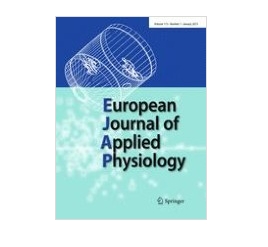Sassi A1, Marcora S M1, Rampinini E1, Mognoni P2, Impellizzeri F M1
1, Service Mapei, Castellanza, Varese, Italy; 2, CNR-ITBA, Milano, Italy

The aim of this investigation was to develop and validate a new method to predict time to exhaustion (pTE) from blood lactate variables measured during a submaximal non-exhaustive constant workload cycling test in professional cyclists. A multiple regression equation to estimate pTE from blood lactate variables measured within the first 10 min of a submaximal test and TE was determined in 40 competitive cyclists. Predicted TE reliability [individual coefficient of variation (CV)] was calculated in eight amateur cyclists who repeated the proposed test three times. Seasonal variations of pTE were monitored in 12 professional cyclists. Validity of pTE was determined by the known-group difference method in 49 professional cyclists. The prediction equation was: log(n)TE = 4.2067 – 0.8221(log(n) B) – 0.2519(log(n) C), where B is the lactate concentration at the 10th minute of the constant workload test and C is the lactate slope calculated between the 5th and 10th minute (adjusted r (2) =0.83, root mean square error in cross validation=23.1%). Predicted TE CV was 11.7%. The pTE obtained at the beginning of the season and the best and worst tests performed during the competitive season, resulted 162, 224 and 103% higher than the basic period test, respectively (P<0.05). Predicted TE was the only parameter discriminating elite from subelite professional cyclists. In conclusion, this study demonstrates that pTE is a valid and practical alternative to incremental tests and direct measures of endurance capacity requiring exhaustive efforts for the evaluation of competitive cyclists.